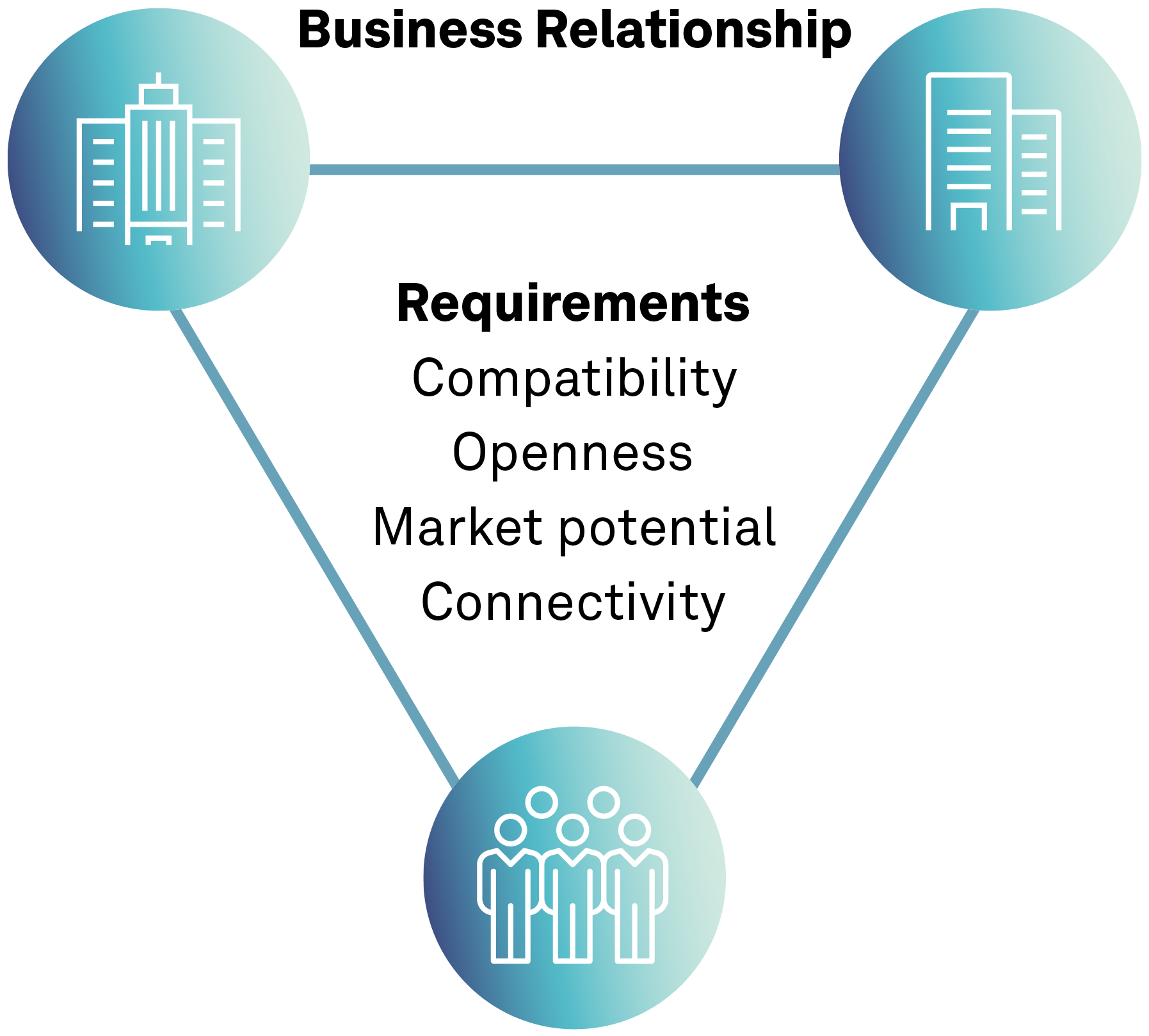Start small and go big with minimum viable ecosystems
Business ecosystems present organizations with a distinctive opportunity to enhance their business models significantly and maintain competitiveness in the contemporary marketplace. Firms that provide genuine added value to their customers increase their relevance and overall worth. According to IDC, organizations that implement an ecosystem strategy experience growth rates that are 50 percent higher than those that do not adopt such a strategy (source: Workspan).
However, what are the steps to establish a successful business ecosystem? Rather than emulating the prominent examples from the technology sector, the concept of the Minimum Viable Ecosystem (MVE) provides a pragmatic and effective approach. This concept outlines a set of criteria and framework conditions that assist companies in creating a sustainable ecosystem. In a market landscape characterized by rapid changes and intense competition, this concept can be crucial in developing offerings that possess genuine market relevance and potential for growth.
Definition: Minimum Viable Ecosystem
A minimum viable ecosystem is an ecosystem that fulfills the following criteria:
- Players: MVE is a simple ecosystem with three players (two companies and customers).
- Purpose: The partners in the ecosystem have a common purpose.
- Value proposition: The ecosystem provides greater value than the combined contributions of the participating companies.
- Compatibility: The products, corporate philosophies and the mindset of the people engaged align effectively.
- Openness: The partners typically exhibit a willingness to engage in collaborative efforts. There exist defined standards, regulations, or (digital) procedures for facilitating connections among partners within the ecosystem, such as through APIs or Software as a Service (SaaS).
- Market potential: The ecosystem functions within a profitable and expanding market characterized by a significant demand for the services provided.
- Networking: The players are interconnected within the market, engaging with other businesses and products, which enables them to effectively enhance their existing relationships.
Manuel Audi and Florian Weihe explain the concept in the Interview in more detail.

The “Minimum Viable Ecosystem” concept and its advantages
The MVE framework provides an effective methodology for the successful establishment of business ecosystems. By concentrating on the "minimum", organizations can operate with agility and swiftly respond to market changes or emerging trends. In contrast to extensive and intricate ecosystems that demand significant resources and investment, an MVE can progress from the initial idea to launch within a mere 12 weeks.
Another decisive success factor is the common purpose: All partners in the ecosystem concentrate their efforts on delivering genuine value to customers. Because true growth opportunities arise only in the presence of clear demand. This common purpose aids in consolidating that demand and guarantees that all parties are aligned towards a common objective.
Minimum Viable Ecosystems (MVEs) serve as the foundation for enduring success rather than being the ultimate aim. They facilitate the establishment of ecosystems in the market and foster initial connections.
With clear framework conditions, the MVE framework ensures the long-term sustainability and ongoing evolution of the ecosystem. Companies gain direction and specific insights into areas where improvements are necessary to effectively establish networks that can nurture vital ecosystems.
Identifying and developing potential in a structured way
Establishing a Minimum Viable Ecosystem (MVE) requires organizations to implement a systematic approach for identifying, prioritizing, and effectively nurturing potential. The initial phase involves identifying potential use cases. The following key questions may assist in this process:
- Which products or services can provide enhanced value when combined with partners?
- Are there existing partnerships that could be broadened to amplify mutual advantages?
- What are the needs of the partners' customers and their customers?
The use cases identified through this method should then be evaluated for their purpose, value proposition, and the four essential framework conditions. This evaluation enables the identification and focused analysis of the approaches with the highest potential.
For this process BELTIOS, part of msg advisors, has developed the Ecosystem Explorer. This tool assists organizations in the preliminary modeling of potential Minimum Viable Ecosystems (MVEs) to establish a unified perspective on the MVE and its prospective development. The various cases are subsequently assessed, compared, and a range of scenarios are simulated to illustrate sales trends, potential business relationships, and their effects on all stakeholders involved. This process not only yields significant insights for the advancement of minimum viable ecosystems but also aids in making strategic decisions regarding the company's positioning and the long-term growth of the ecosystem.

Summary
A minimum viable ecosystem provides organizations with the ability to rapidly, flexibly, and purposefully establish a business ecosystem. It lays the groundwork for enduring success by effectively linking partners and customers. msg advisors assist in the strategic development and growth of MVEs through specialized consulting services and tools. If you start small, you can make it big.
Find out more.
Kontakt

Dr. Manuel Audi
Dr. Manuel Audi is looking forward to your request.

Fabian Otto
Fabian Otto is looking forward to your request.
Further topics
-

Business Ecosystems – Connecting Businesses
Business ecosystems can help your company achieve more growth, innovation and competitiveness. Find out how this works in reality and how ecosystems can be set up flexibly and efficiently. msg advisors will support you in developing and implementing a successful business ecosystem strategy.
- 1
-

Business ecosystems: What really works?
The initial enthusiasm surrounding business ecosystems has subsided, but the potential of cross-industry value-added offerings remains high. Find out here why it is often not a good idea to copy big tech role models and under what conditions business ecosystems can actually create added value.
- 1
-

Decentralized Ecosystems
Advanced data ecosystems must enable comprehensive digital processes while upholding the data sovereignty of partners. Dr. Oliver Mehl and Ralf Neubauer describe which process-related and technological requirements are necessary for this.
- 1


